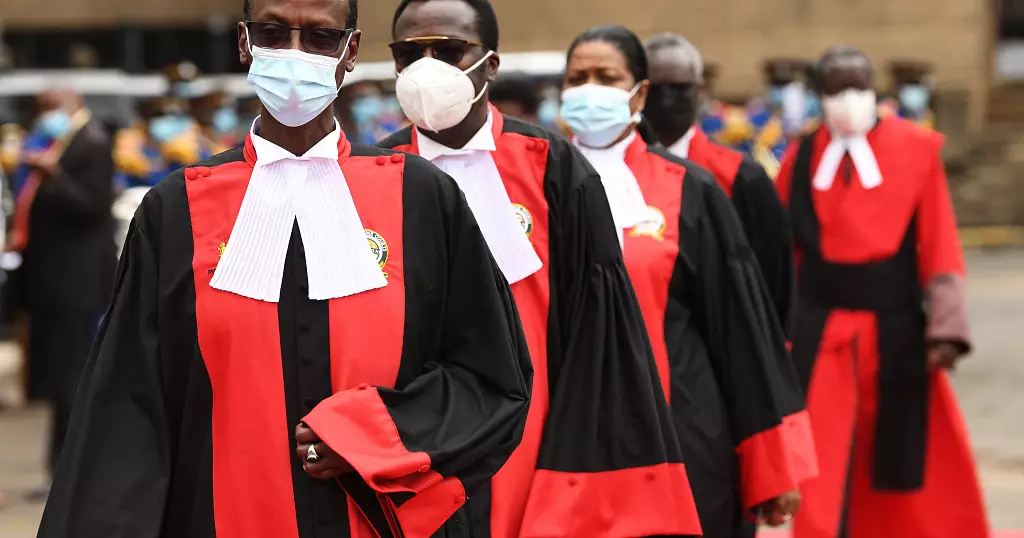advertisement
There Was No Hacking – Supreme Court Declares

The Supreme Court of Kenya has declared there was no hacking in the 9 August 2022 election, vindicating President-Elect Dr William Ruto.
Reading the summarised verdict on the Azimio election petition, Chief Justice Martha Koome was certain to indicate that the judges’ decision was unanimous. In what has to be an even bigger blow to the petitioners, technology has been proven to be far from the culprit in the proceedings. But while the technology itself is neutral, its utilisation by the commission was somewhat messy.
The presidential petition comes to end with the insights the technology experts enjoined as Amici Curiae shared, giving technology its hurrah as the lead contender in a list of nine issues in need of judicial resolution.
advertisement
In a case that rose and fell not just on Commissioner Wafula Chebukati’s last-minute antics but on solid technology, it was bound to be a landmark case. The biggest issue at hand was whether the technology deployed by the Independent Electoral Boundaries and Commission (IEBC) for the conduct of the 2022 elections met the standards of verifiability, security, and transparency to guarantee accurate and verifiable results.
To understand this ruling, we must revisit The Kriegler Commission Report, an independent review of the Kenya electoral process dating back to December 2007. 15 years later, here we are. The lack of trust in Kenya’s elections has endured relentlessly. It inevitably led to the introduction of technology in the electoral process following recommendations made by the 2007 commission. One of its most critical recommendations remains the integration of technology into our electoral process for registration, identification of voters, and transmission of results. A recommendation upheld in 2011. Come 2022 and IEBC had to adopt technology, consequently developing KIEMS, making Kenya’s electoral process a hybrid of both manual and technological processes.
It was this adoption that was being interrogated, with Azimio stating the deployment and IEBC’s utilising of technology fell short of the law. The Supreme Court held unanimously and amidst sensational affidavits that the technology did not fall short. That it met legal standards and did, in fact, guarantee accurate and verifiable results. “We are not persuaded that the technology deployed by IEBC failed the standards set by the constitution,” said Justice Koome, because:
advertisement
- The KIEMS kit may have failed in 235 polling stations, yes. But, 86,889 voters were granted the right to vote manually, and forms 32A were filed in Kibwezi West and parts of Kakamega.
- While the audit report was released only a week to the election, the register of voters was used during the election without anomalies.
- Smartmatic International Holding b.v as suppliers of the election technological infrastructure, did what IEBC did not have the capacity to perform. No credible evidence showed that Smartmatic’s access was anything but authorised.
- IEBC effectively deployed a sound voter registration system that captured the unique features of each voter locally and in the Diaspora.
- IEBC opened the register for verification of biometric data by members of the public, for a period of 30 days thereafter the register was revised to address issues arising. KPMG then audited, and were confident any issues that arose were addressed.
Some of the issues laid at the feet of technology included similarities in the authentication process, raising issues on security. The integrity of the technology, the suit said, was designed to be simple yet it was not simple enough for the average Kenyan to use without expert knowledge. That, and the fact that IEBC was meant to prep the technology at least 120 days before the election while ensuring consultation with all relevant stakeholders.
An issue worth exploring for future elections and in greater detail could be – why was this technology not local? Aside from that, did IEBC violate its constitutional duty by delegating the design, implementation, and conduct of the KIEMS component to a non-local company, and as a result obfuscating the public’s understanding of the KIEMS kit? Did they also “vigorously” fight any attempt to subject Smartmatic’s’ activities to accountability and transparency, including the safeguards as required by law?
Bringing up the rear was KPMG’s audit. Why, the petitioners wanted to know, were there numerous changes of stations without voters’ knowledge or approval of the affected voters?
advertisement
Relying on sworn affidavits, the Court said IEBC had indeed met the constitutional threshold, and any access to the technology in dispute was only granted to authorised persons. IEBC also maintained an audit trail citing information was available and could be authenticated through the use of security features. The annual audits done by KPMG were further complied with and certification to that effect was handed over with both the interim and final reports as well as remedial measures “somewhat addressed.”
The full judgment will be delivered in 21 days.